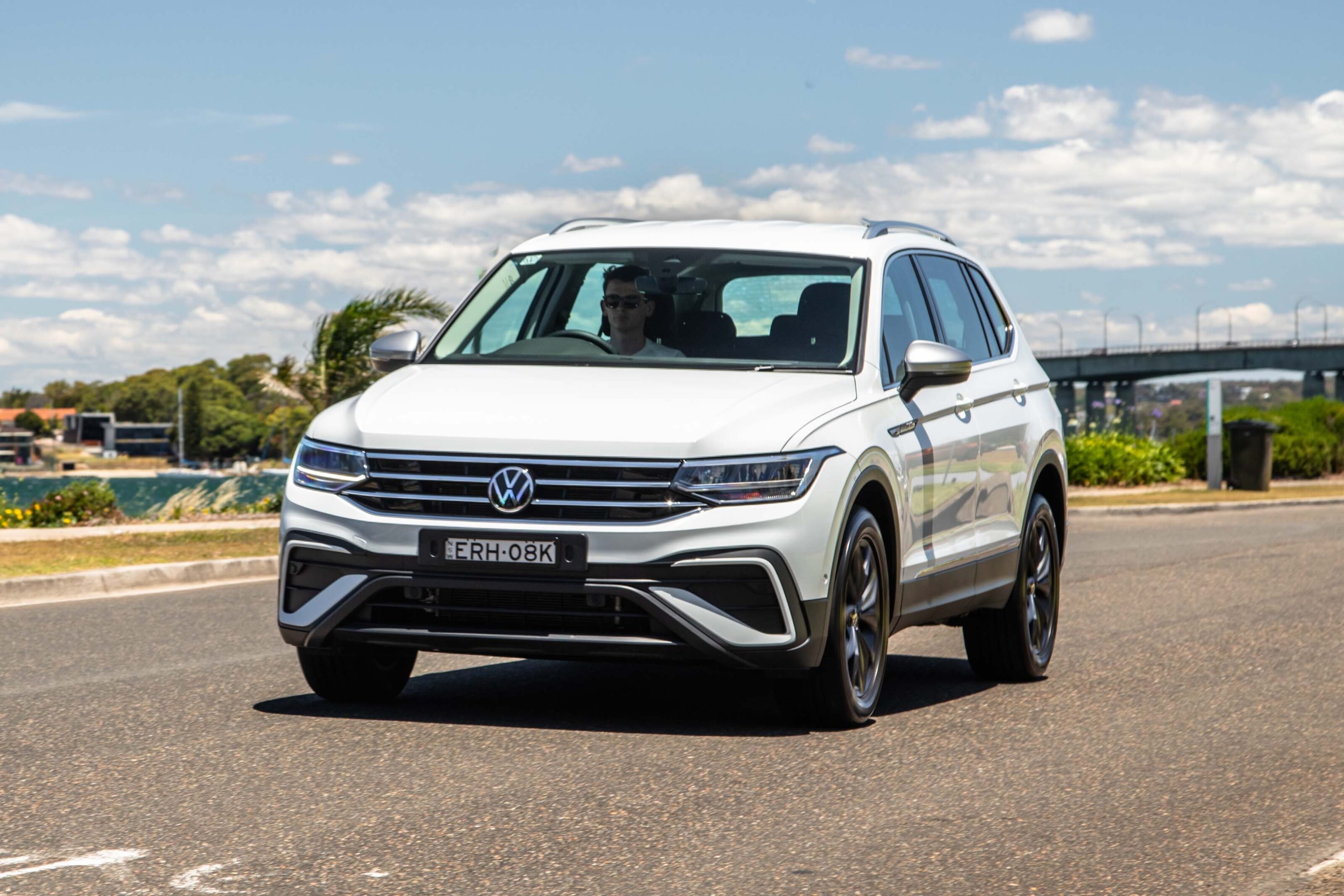Score breakdown
Things we like
- Comfortable seats
- Smooth drivetrain
- Easygoing vibe
- Interior space
Not so much
- Options pricing
- Missing RCTA (for now)
- Flaky wireless Apple CarPlay
Volkswagen’s Tiguan Allspace makes up 40 per cent of the brand’s mid-size SUV sales mix, a number that still surprises me.
It’s a stealth move, you see, because they look pretty much the same as the standard car because of some swift work with the styling pen building on an already tight design.
As a seven-seat version of the Tiguan, it can carry more people than the Touareg while being not quite such a behemoth or as expensive. As I would have it, it’s for people I would normally talk out of a seven-seater because they don’t need a car that big.
The Tiguan Allspace range stretches from the 110 TSI Life through to the ever-popular 162 TSI with a couple of fun diversions along the way, like the cop-car-based Adventure and the blacked-out Monochrome.
Here, we tackle the entry-level 110 TSI Life to see if makes the grade.
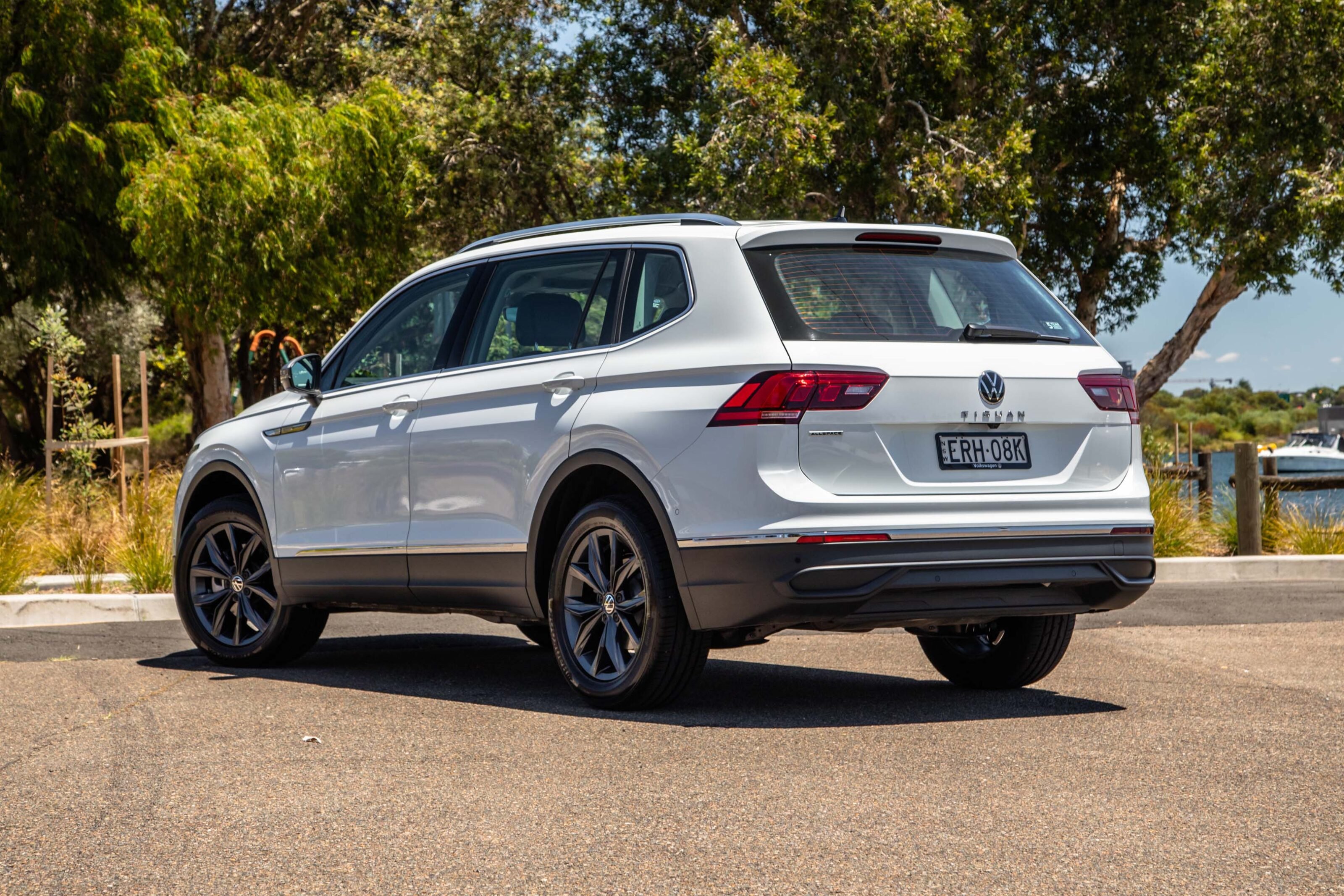
JUMP AHEAD
- How much is it, and what do you get?
- How do rivals compare on value?
- Interior comfort, space and storage
- What is it like to drive?
- How is it on fuel?
- How safe is it?
- Warranty and running costs
- VERDICT
- Specifications
How much is it, and what do you get?
Volkswagen, like most manufacturers, has suffered from shortages of various bits and pieces so a couple of things come and go depending on batches.
The upside was for most of 2022, that the Life kicked off from $43,290 before on-road costs. A recent round of price hikes for the new year bumped this Allspace back to $44,490, though it’s still more affordable than its $44,590 launch price.

| 18-inch wheels | Digital dashboard |
| 8.0-inch touchscreen | Front and rear parking sensors |
| 8-speaker stereo | Reversing camera |
| Adaptive cruise control | Satellite navigation |
| Auto LED headlights | Space-saver spare |
| Auto wipers | 3-zone climate control |
| Cloth interior | Wireless Apple CarPlay and Android Auto |
| DAB+ digital radio | Wireless charging pad |
I honestly think this is quite a thoughtful spec and when compared with, say, a 5+2 seater Mitsubishi Outlander.
The powered tailgate, which was standard in June, is now a $600 option. White is free, King’s Red is $1100 and the other four available colours are $900.
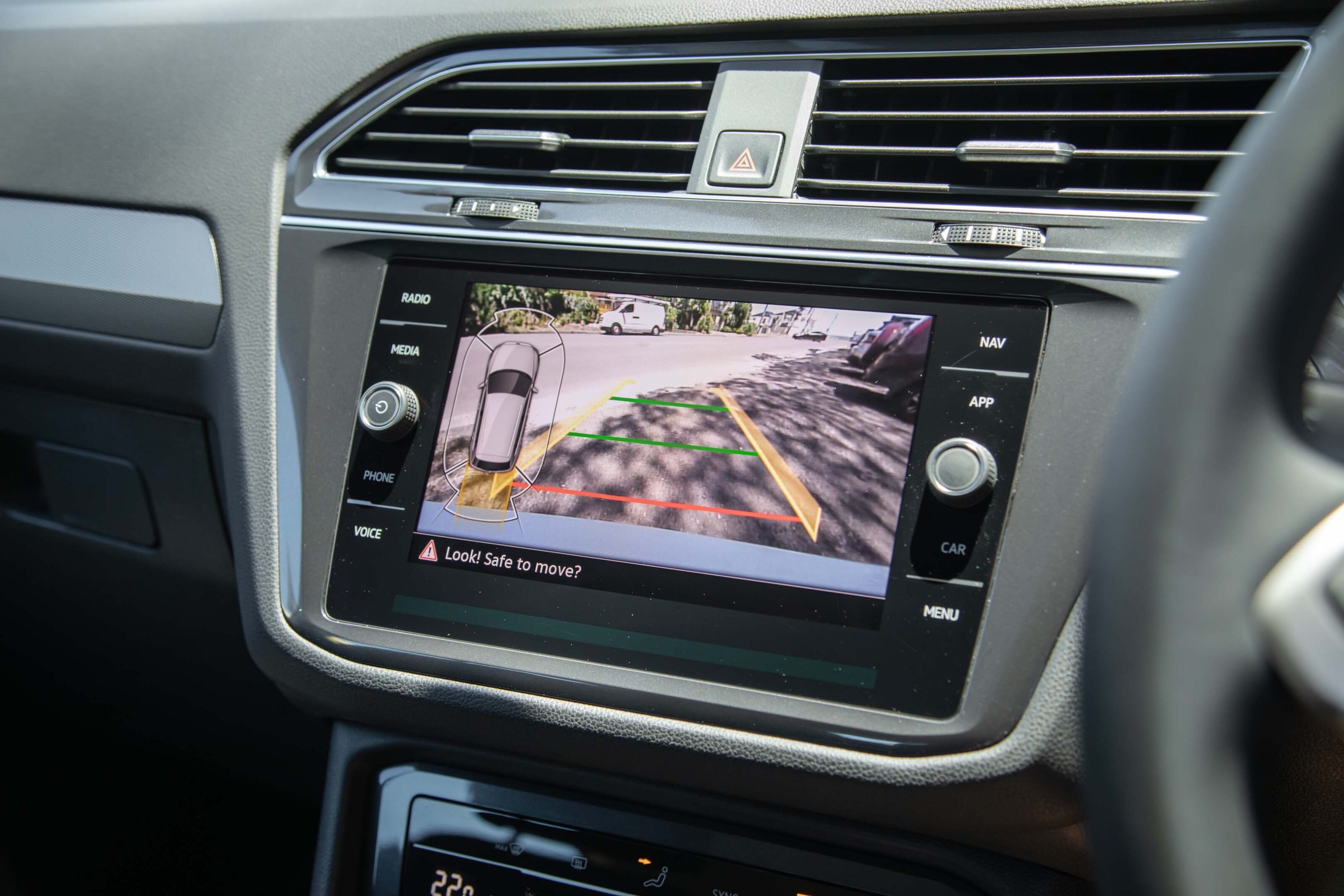
Luxury package
For a not-messing-around $5500, you can get:
| Comfort sport front seats with heating and adjustable lumbar support |
| Electric adjustment for driver’s seat with memory function |
| Heated and adjustable exterior mirrors with memory |
| Panoramic glass sunroof |
| Vienna leather seats |
How do rivals compare on value?
The Mitsubishi Outlander LS seven-seater, at $39,740 before on-road costs, is the Tiguan Allspace’s cheapest competitor.
It’s a big unit, quite wide and with quite a good interior but without the VW’s accomplished driving dynamics. Despite having more power, performance suffers a little due to its continuously variable transmission.
A Mazda CX-8 Touring SP comes in at $48,390 before on-road costs for a 2.5-litre petrol with front-wheel drive. Its third row is more usable than an Outlander’s but about lineball with the Tiguan’s, which is to say they’re both for occasional use.
The Mazda has a similarly thoughtful spec but compared to the VW is let down by iffy front seats while punching on with more power and a smooth six-speed automatic. Then again, if you were to pit it against the similarly-priced Tiguan 132 TSI, things are closer.
VW Group stablemate Skoda has the Kodiaq, but they’re all up in the $50K range, with all-wheel drive and are generally fully loaded.
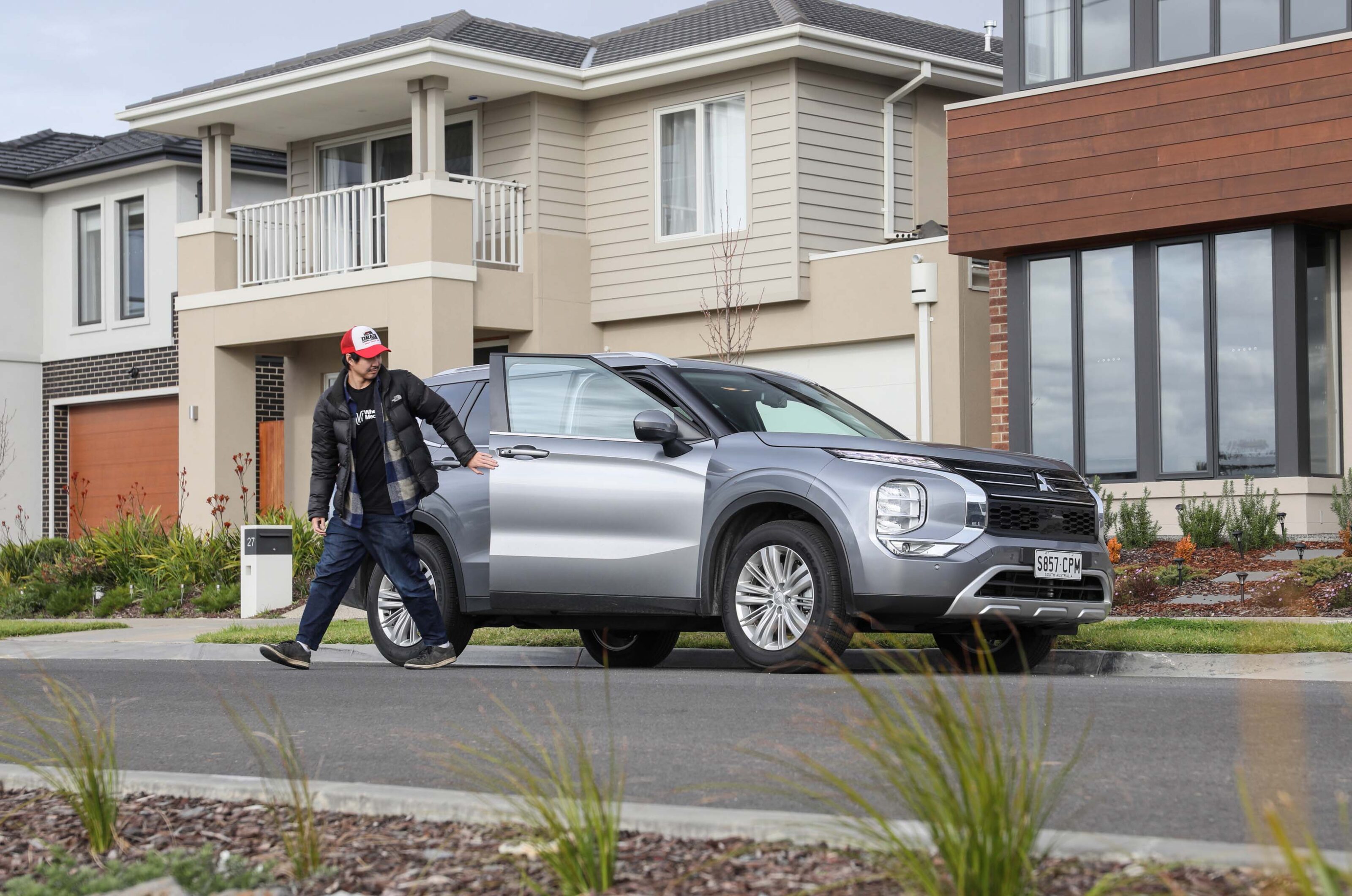
Interior comfort, space and storage
For a car of this footprint, it’s remarkably roomy inside.
I mean, it’s not small – 22cm longer than the standard Tiguan – but it also has a longer wheelbase of 2791mm. But it’s smaller than the aforementioned CX-8, which is a hefty 4.9 metres long (nearly as long as a CX-9) with closely matching interior space.
The third row is accommodated by a nearly 11cm stretch in the rear overhang, the longer wheelbase helping accommodate that and also stopping it from looking tail-heavy. With the third row in action, you have a small hatchback’s boot capacity of 230 litres. Not a Polo, obviously, that’s huge for such a small car, but you get my meaning.
With the occasional seats out of the way, you’ll have a 700-litre boot, up by 85 litres on the standard Tiguan. When the middle row is folded, you have 1775 litres, up by 110L.
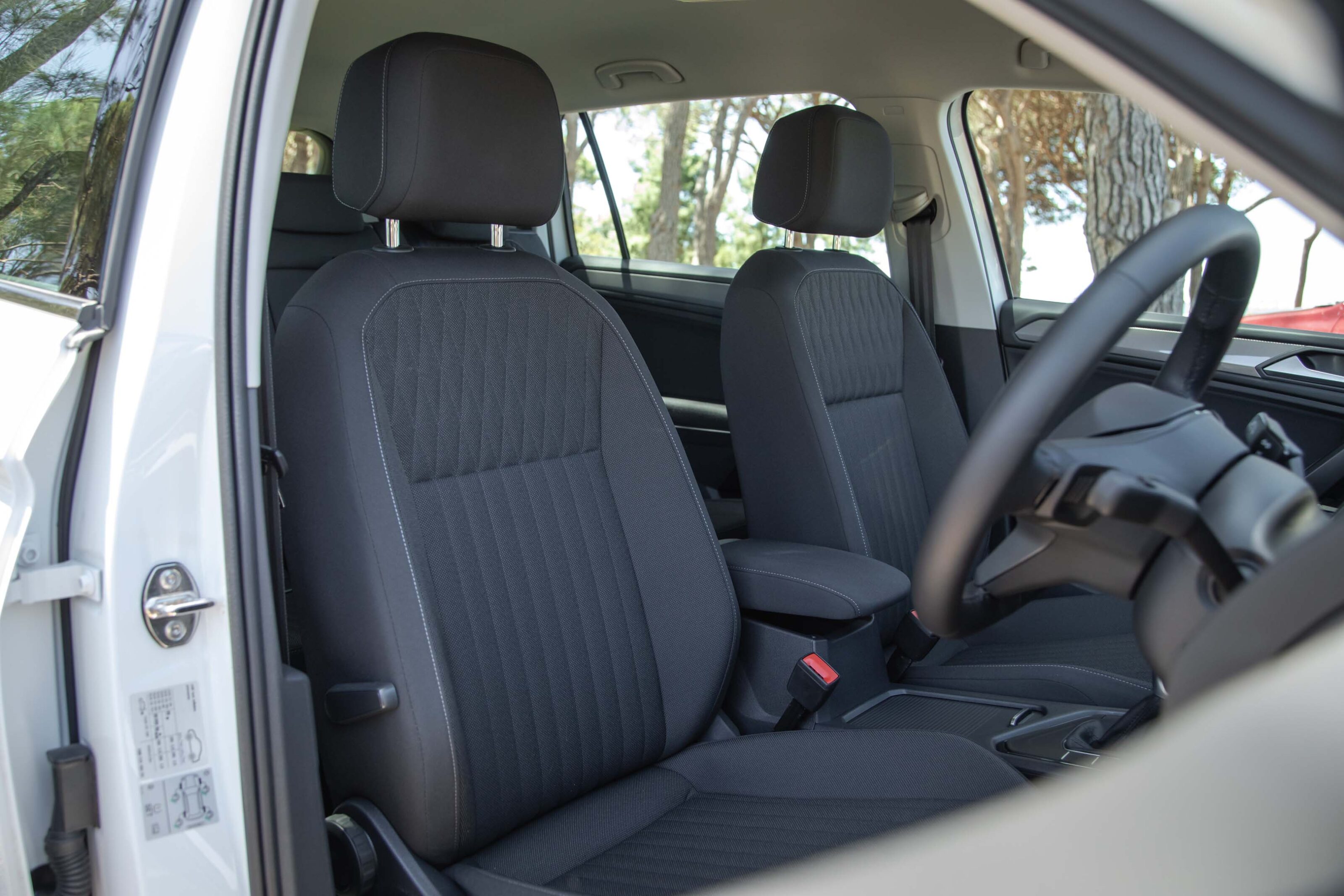
The Tiguan Allspace’s middle row is very comfortable, split 40:20:40 into effectively individual seats and they work quite well, although three across isn’t going to be a joy. The high transmission tunnel and slightly narrow middle chair put paid to that.
A folding central armrest includes two cup holders, there is a third climate control zone with rear air vents (rare at this price point) and the front seatbacks have handy little pockets for phones. What’s extra clever about them is that they’re at eye level so folks won’t leave them behind.
Taking care of charging are 12-volt and USB-C power outlets, and the huge bottle holders in the doors are handily carpet-lined to reduce noise and clatter from the stuff you put in them.
Back in the third row, you’ve got a 50:50 split, not a lot of legroom and if you’re 180cm tall, your knees in your face. The middle row can slide forward to improve your position, but it’s obviously for kids and even then, patient ones. But they are usable.
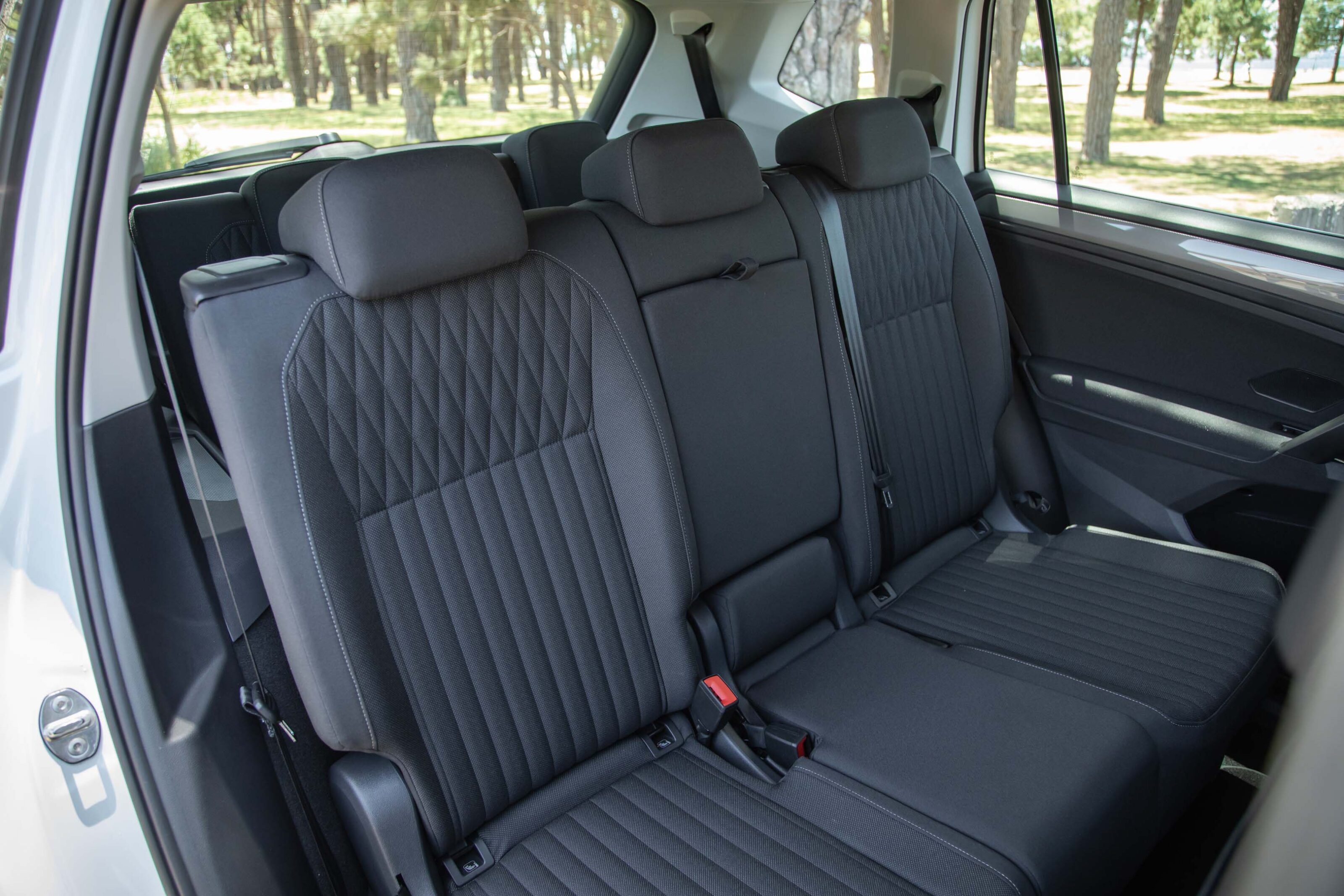
Even here in this entry-level Allspace, the front seats are really comfortable. I can’t speak for really long trips, but they achieve that zero-gravity feel some seats just nail.
I think the cloth trim is part of the feeling because I had a 132 TSI back-to-back with the 110 and it had leather. I didn’t think those seats were as comfortable, so I’d think twice about the Luxury Package, or at least drive a Tiguan with leather if you’re choosy about seat comfort.
The digital dash makes up for the small size of the touchscreen. VW’s much – and I think sometimes unfairly – maligned media software works fine when you’re used to it but could do with a bit of work. The wireless Apple CarPlay connectivity is flaky, too, so I ended up going with plugging in via one of the two USB-C ports up front.
Also up front are two cup holders, a storage tray and an armrest covering a storage bin. Two more big bottle holders grace the doors.
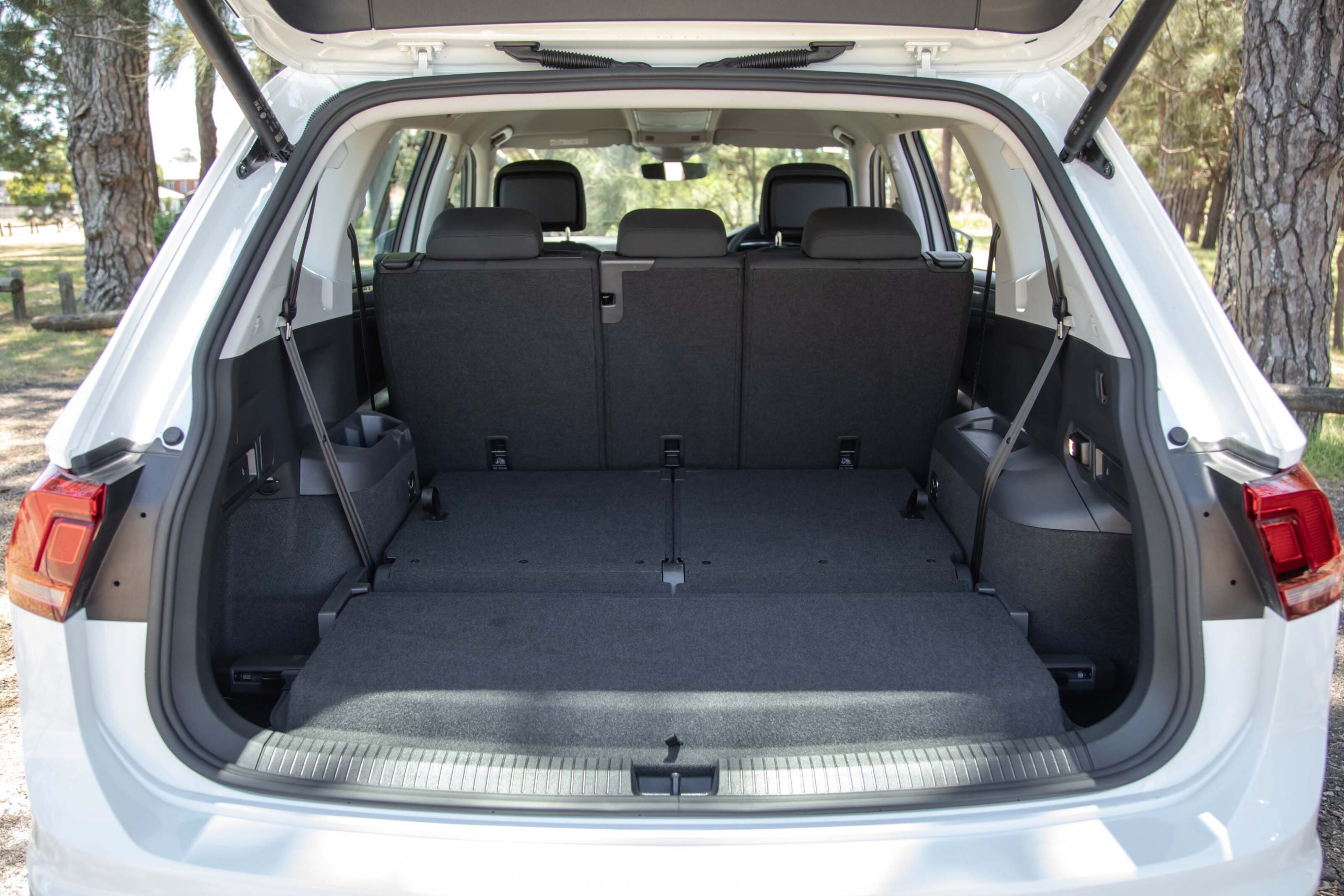
What is it like to drive?
My first drive of the base Allspace was at the launch event last winter, and I remember being quite taken with it.
I think the key here is the 1.4-litre engine’s tractability and the six-speed transmission’s superior overall operation and calibration.
| Drive | front-wheel |
|---|---|
| Engine | 1.4-litre four-cylinder turbo-petrol |
| Transmission | 6-speed dual-clutch |
| Power | 110kW @ 5000-6000rpm |
| Torque | 250Nm @ 1500-3500rpm |
| 0-100km/h | 9.5 seconds (claimed) |
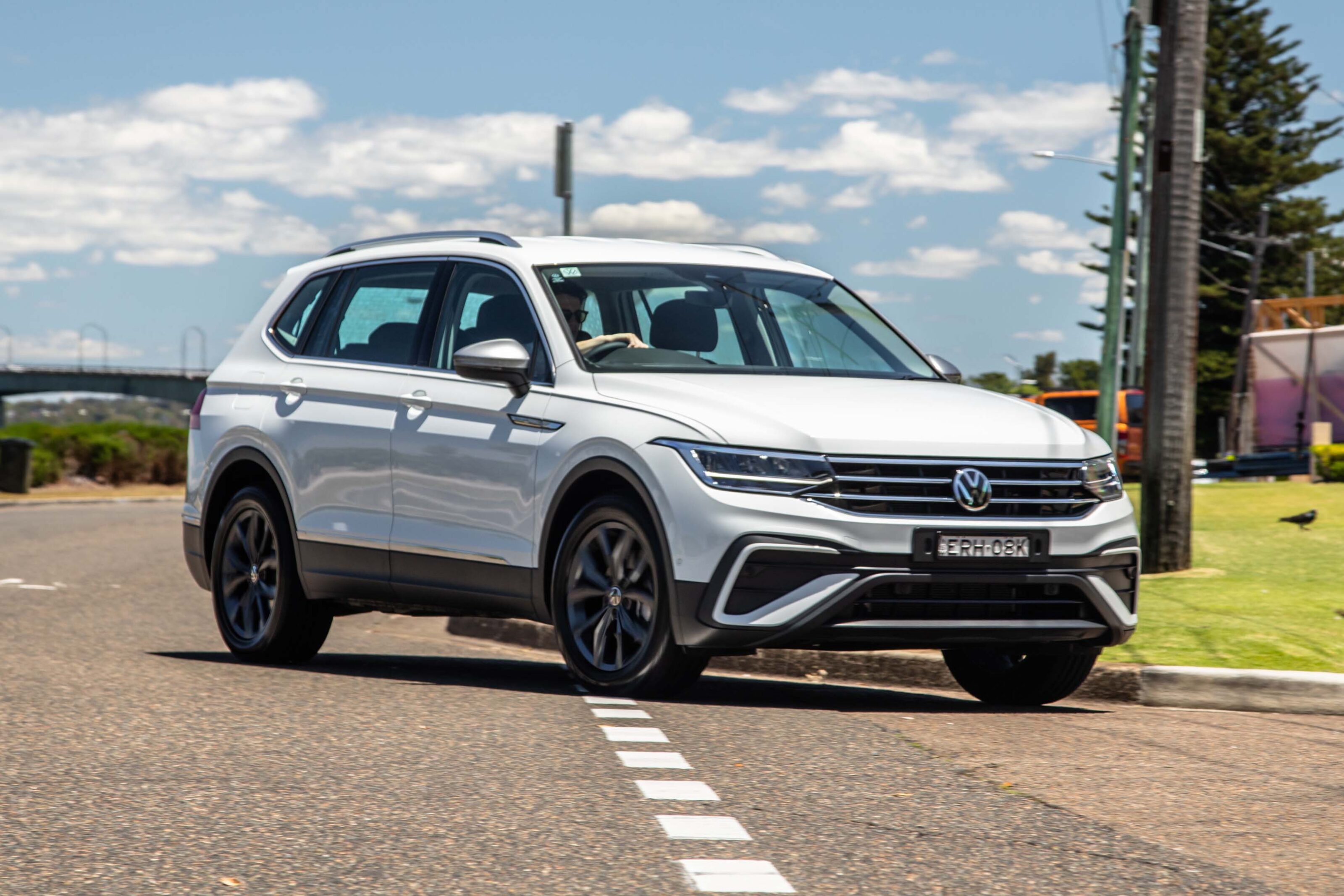
The six-speed dual-clutch auto is less hesitant on the uptake and I think that’s partly because the higher-powered engines have both all-wheel drive and a lot more torque to contend with, so the calibration errs to the more conservative but is ultimately less effective.
At this stage, I will remind you that I am not an engineer and I am indeed speculating based on seat-of-the-pants feel.
My wife also noted how much smoother it felt from the passenger side, so it’s not just me.
The higher-profile rubber also knocks the edges off the ride of its larger-wheeled brethren, handling bumps and skips more smoothly if not more quietly. Road noise isn’t excessive, but it stands out in what is mostly a very relaxed car.
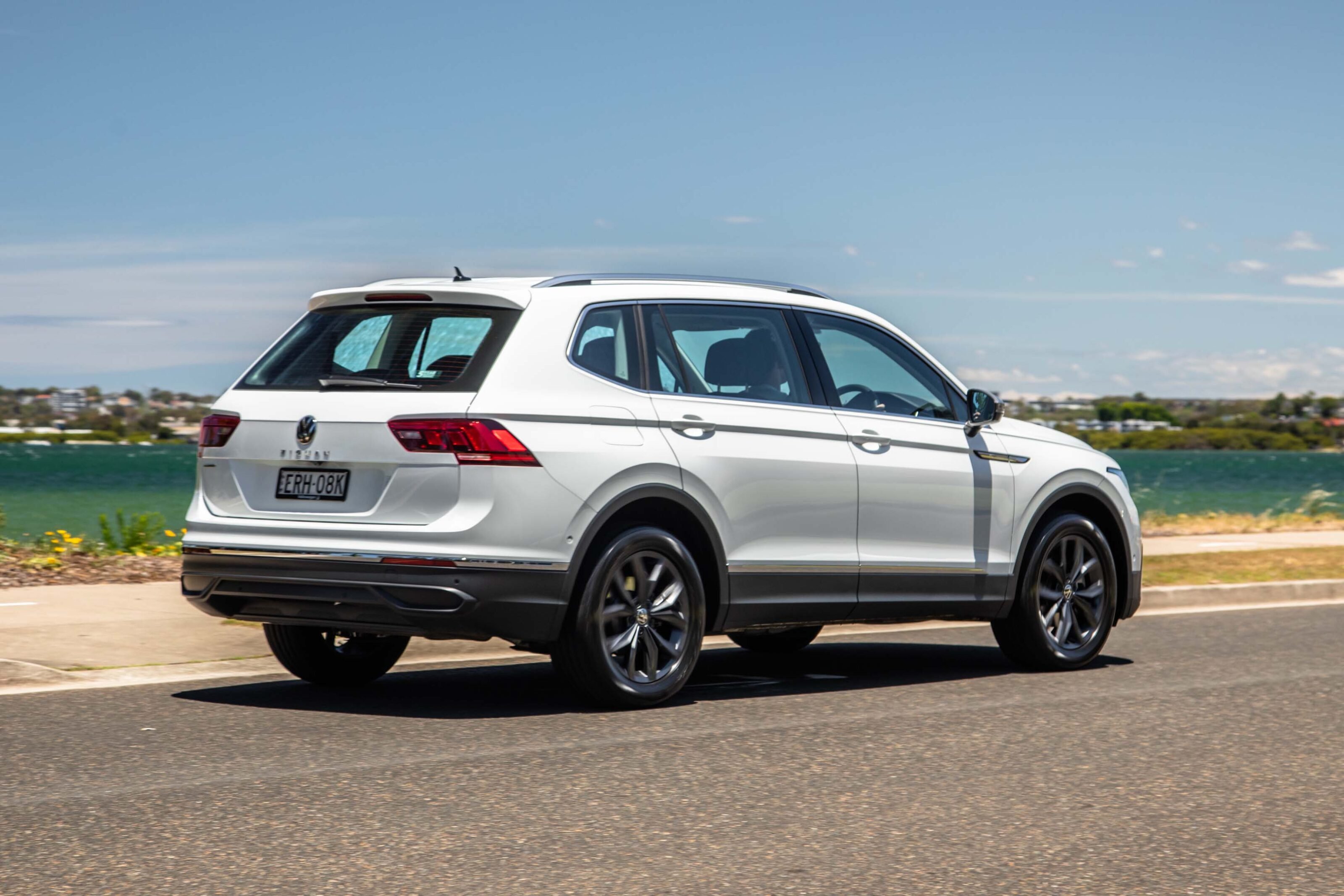
While the edges of the ride are knocked off, the steering feels lighter and so there’s a little less feel. I don’t think that’s a dealbreaker for most people (actually, it isn’t at all), but it’s great for parking and general manoeuvering.
Most of the time you have to keep reminding yourself that this quite sizeable machine is being propelled by a tiny, tiny engine that you’d expect to be more at home in the much smaller Polo, yet despite modest outputs of 110kW and 250Nm it does an admirable job of shifting a roomy seven-seat SUV.
It’s not quick, no, but swift enough and like most cars in the class, a sub-10 second time to 100km/h is more than enough.
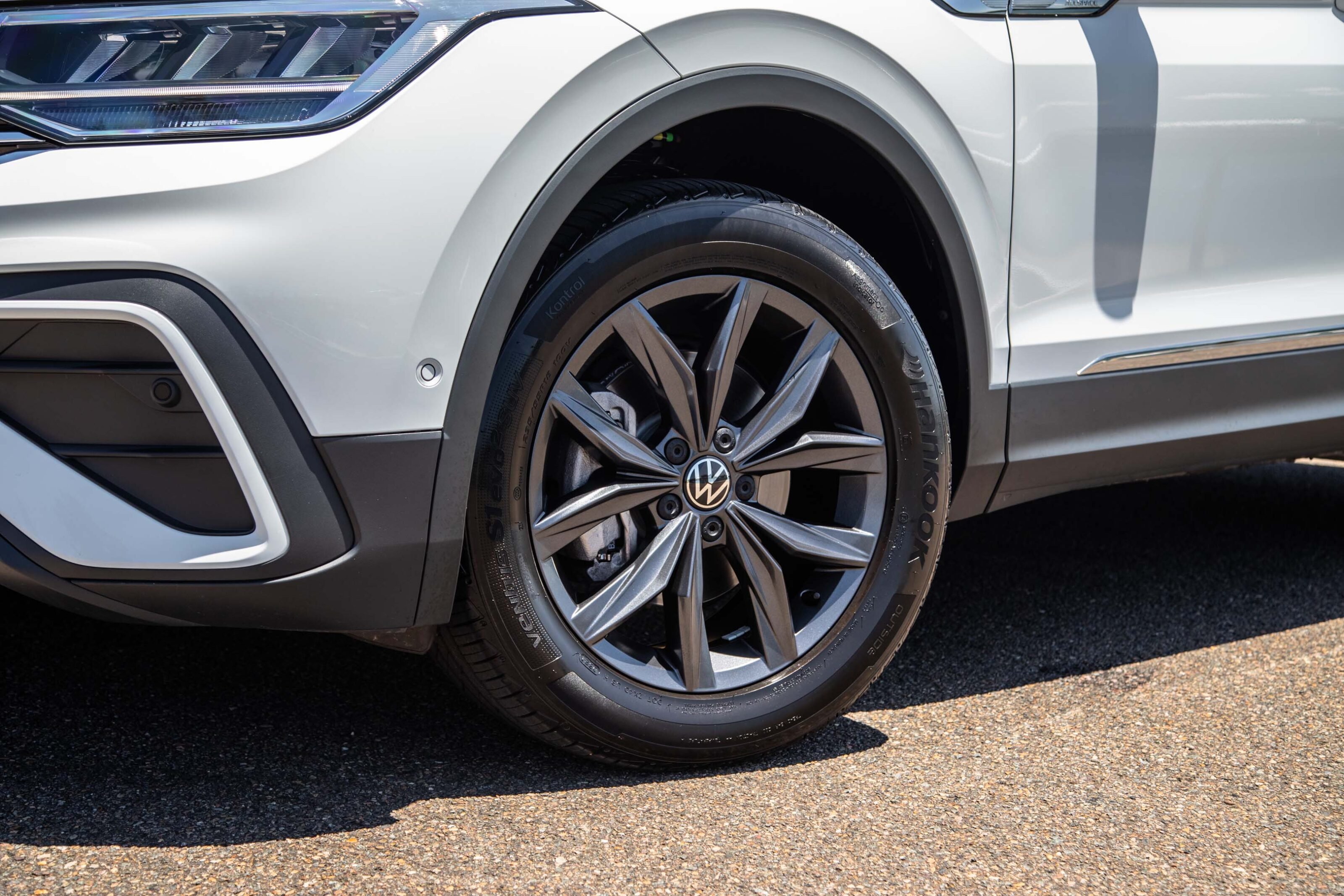
How is it on fuel?
Volkswagen’s combined-cycle claim of 7.7L/100km stood up pretty well in my week with the Allspace 110 TSI, with a trip computer result of 8.2L/100km in mostly suburban stop-start running.
| Fuel consumption (claimed) | 7.7L/100km (combined cycle) |
|---|---|
| Fuel consumption (on test) | 8.2L/100km (trip computer) |
| Fuel tank capacity | 58 litres |
| Fuel type (min) | 95 RON |
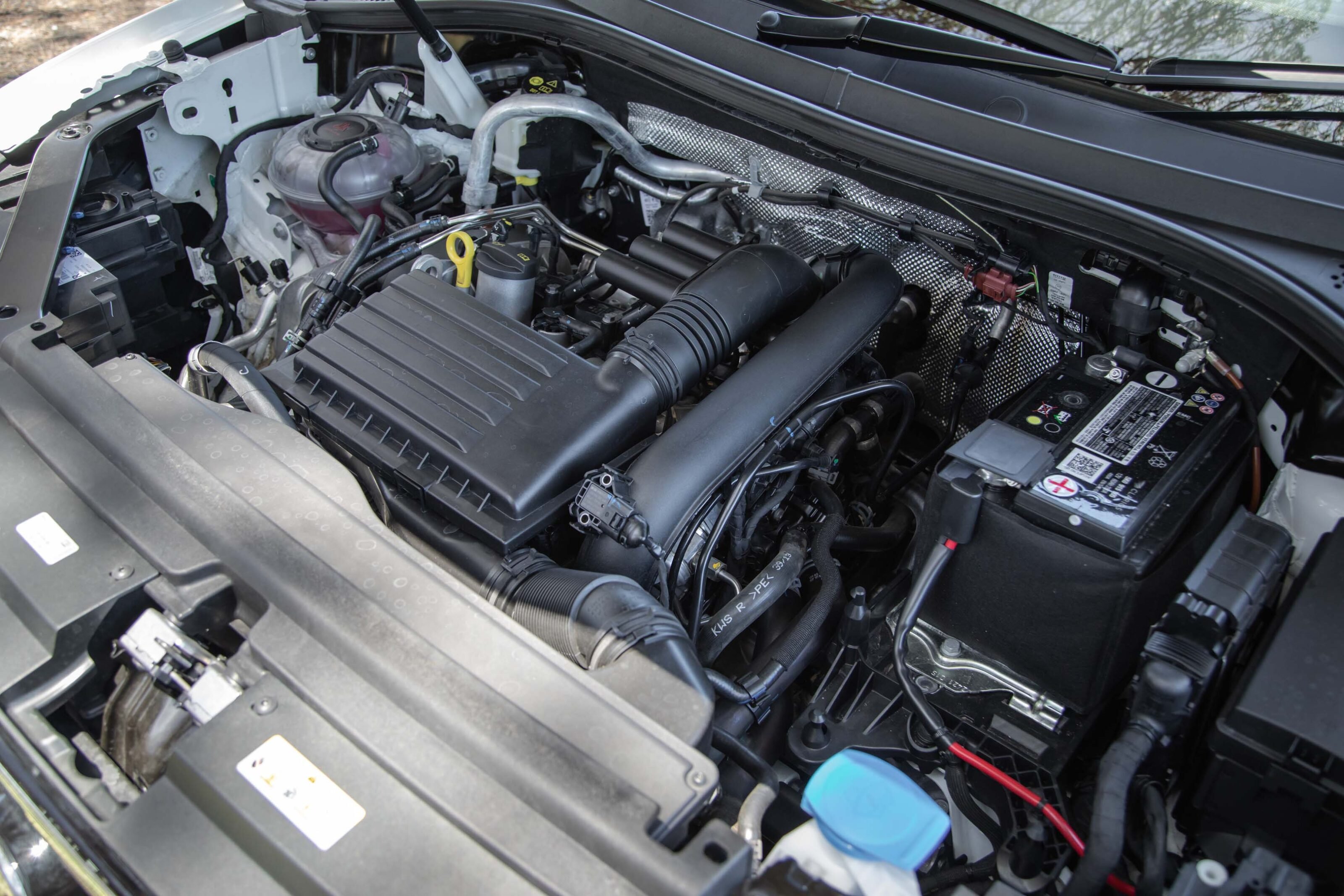
How safe is it?
The Tiguan’s 2016 five-star ANCAP rating also applies to the Allspace. Without a centre-front airbag, it’s unlikely that rating would be renewed, so the next iteration due in 2024 will likely sort that out.
| 7 airbags | Forward auto emergency braking |
| ABS and stability controls | Forward collision warning |
| Adaptive lane guidance | Lane-keep assist |
| Driver attention detection | Reverse AEB |
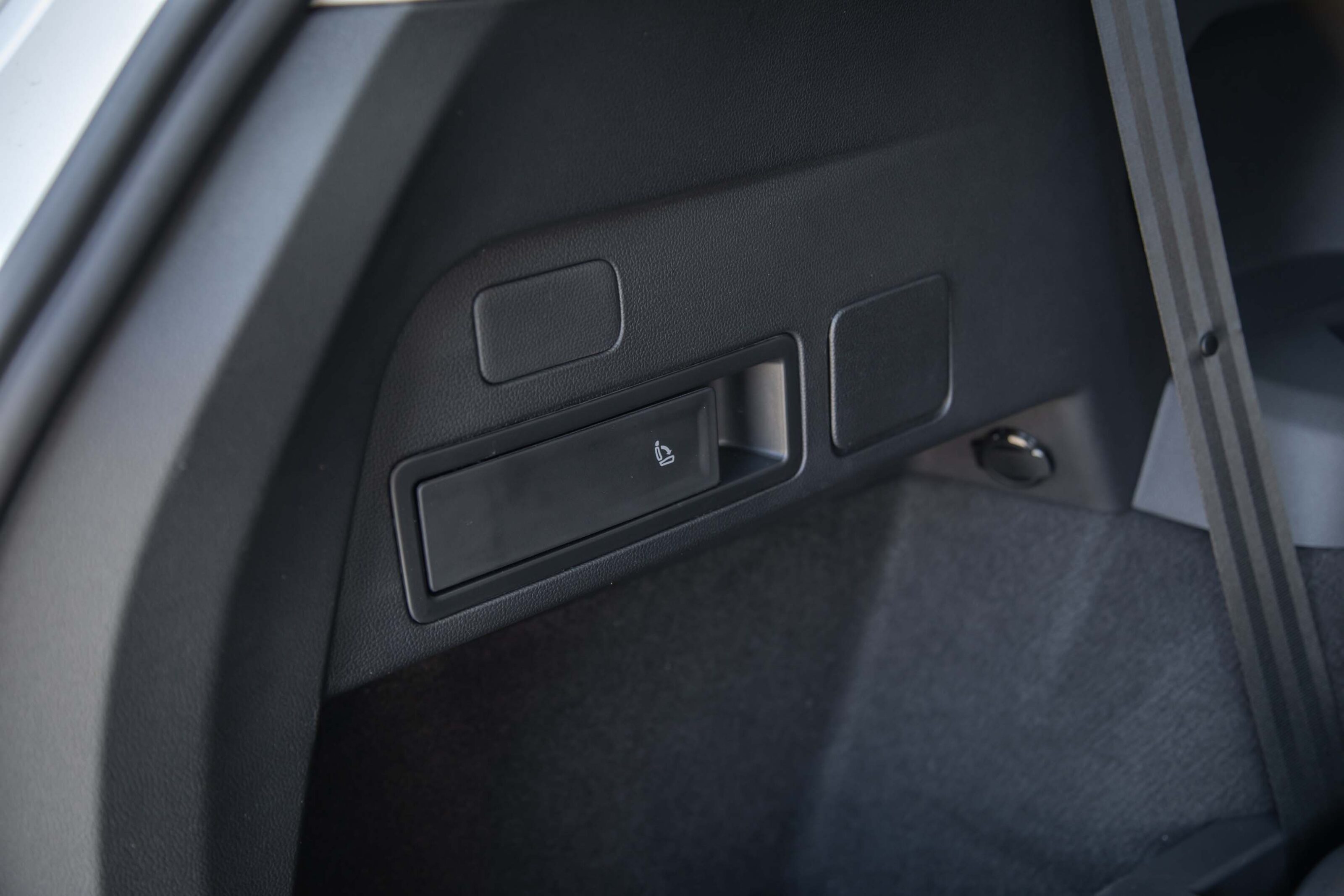
Another reason this car is cheaper at the moment is that rear cross-traffic alert is unavailable for the time being, which is a bit of a blow in a car this big.
Cheeringly – if slightly bafflingly, at least at first glance – reverse AEB remains, so while you won’t know that someone is coming, the car will and will jam on the brakes.
Side assist is also off the menu until some time in 2023, so keep a close eye on its return.
The airbag count includes a driver’s knee airbag and the curtain airbags reach the third row.
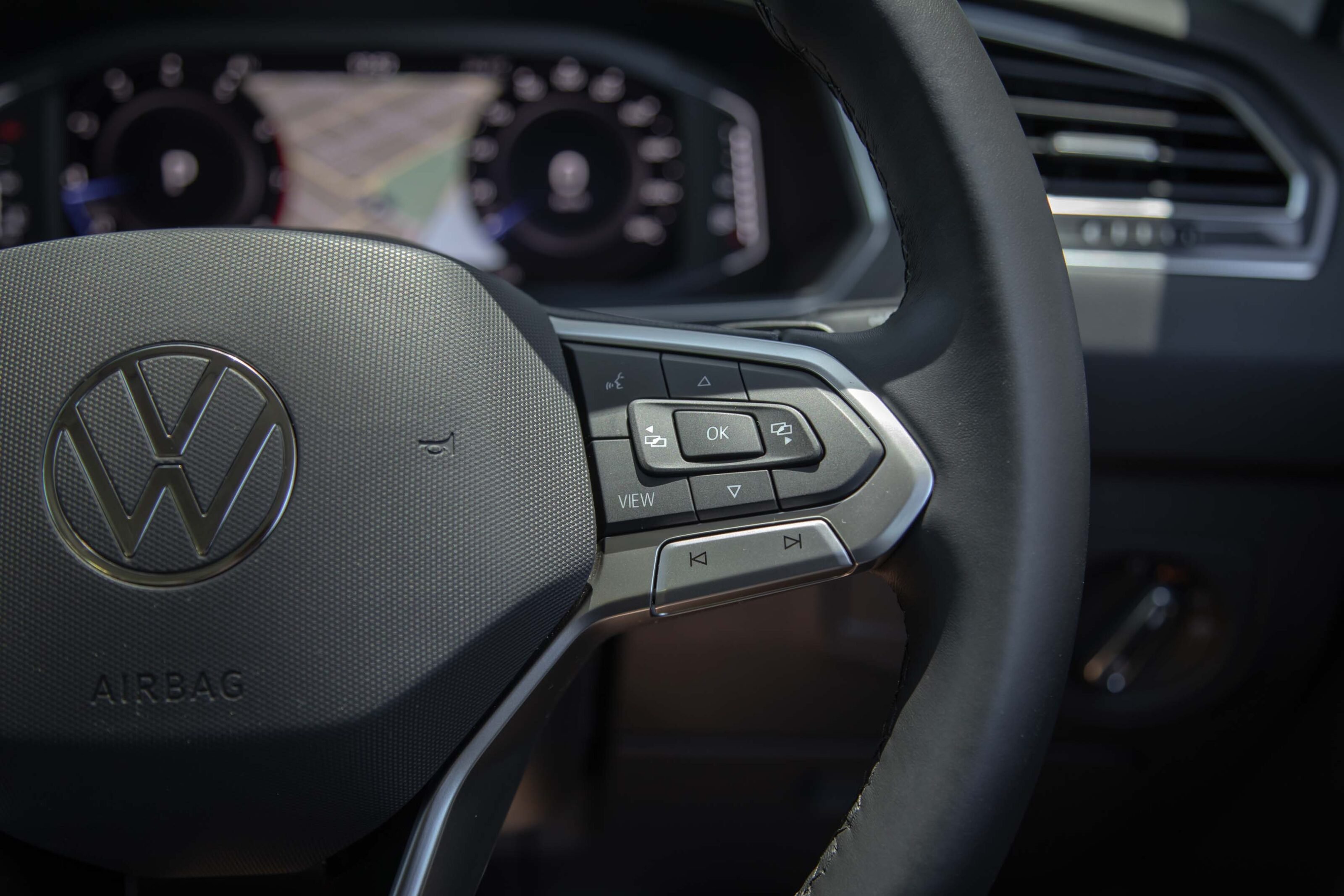
Warranty and running costs
VW offers a five-year, unlimited-kilometre warranty, which is about right for the market save for a couple of longer offerings from the likes of Kia and Mitsubishi.
At purchase time, you can opt to pay for your servicing upfront with three- or five-year maintenance plans.
For the 110 TSI, a three-year plan is $1400 while five years is $2600. This isn’t especially cheap but will save you money over the same period compared with pay-as-you-go.
The five-year plan saves a$743 while the three-year one scrimps a more modest $143.
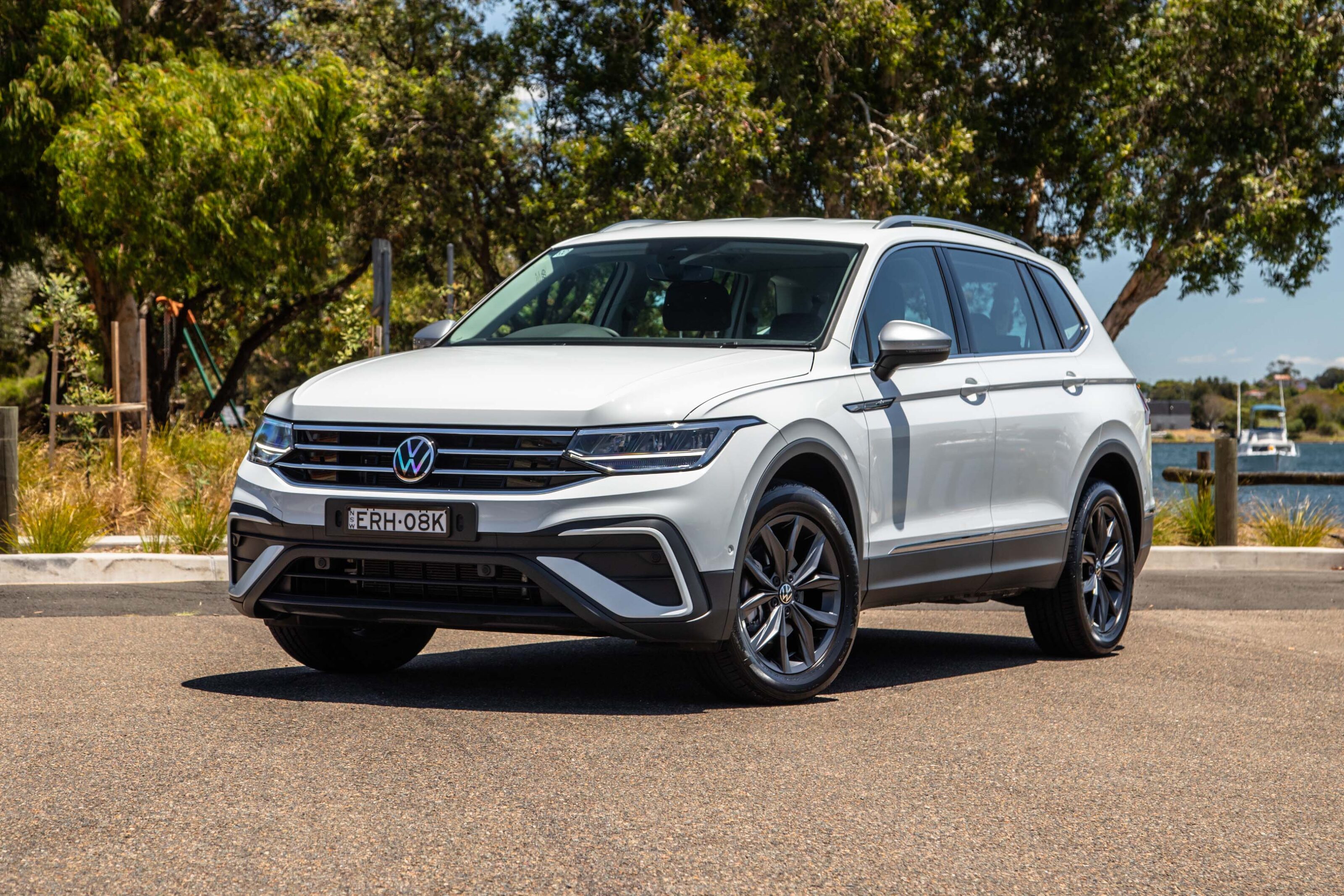
VERDICT
Supply chain issues aside, the 110 TSI could just be the pick of the Tiguan Allspace range.
Most people don’t need or want all-wheel drive, they want transportation. The Allspace is obviously better than just transportation because it’s so good at what it does. If you go for the 162 TSI as almost every else does, yes it has more stuff and it’s faster but the fundamentals are the same.
The front-wheel drive 110 TSI will cope very well with pretty much anything you throw at it, provided it’s on tarmac or a well-maintained dirt road and you’ll be doing it comfortably and effortlessly.
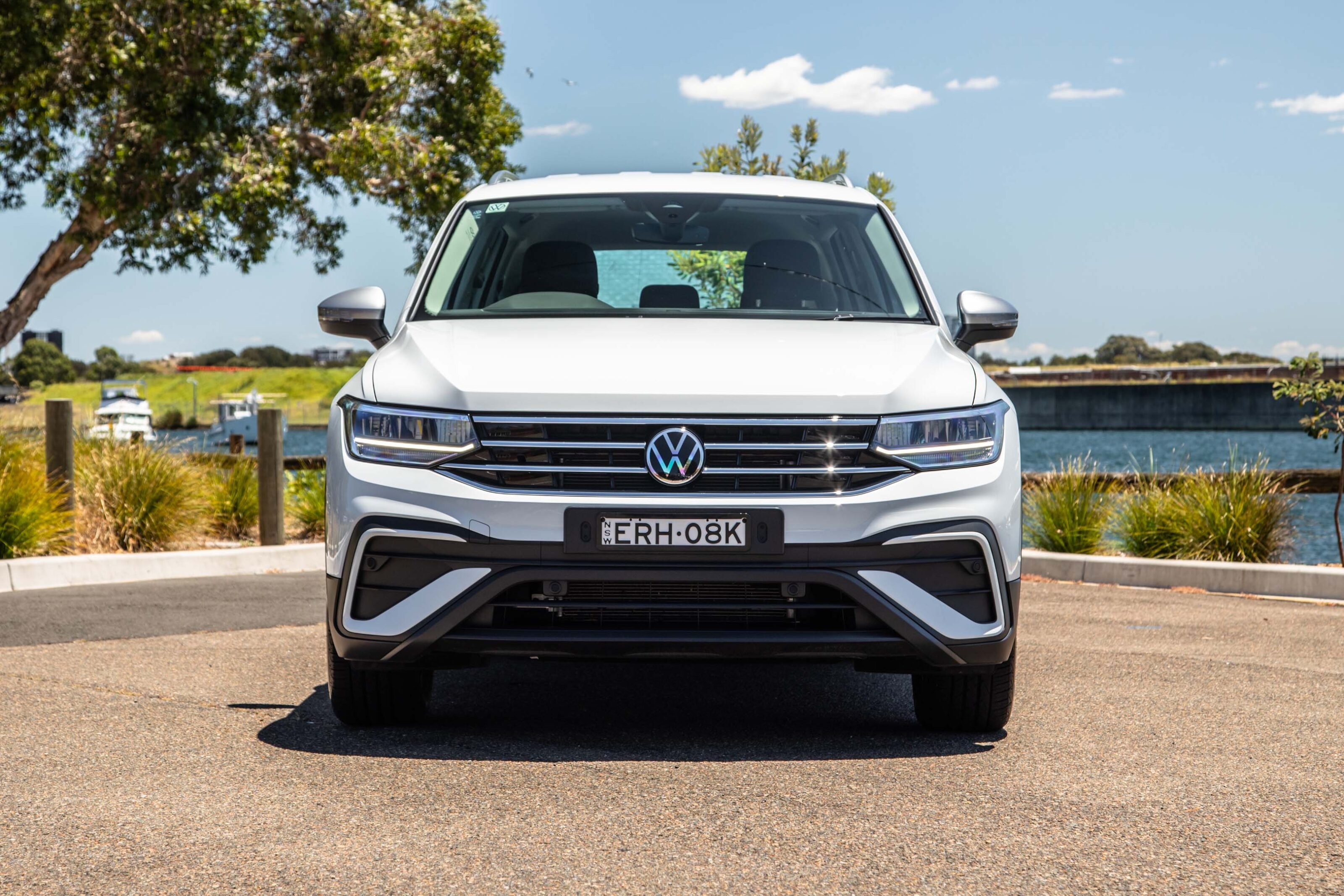
2022 Volkswagen Tiguan Allspace 110 TSI Life specifications
| Body | 5-door, 7-seat large SUV | |
|---|---|---|
| Drive | front-wheel | |
| Engine | 1.4-litre four-cylinder turbo-petrol | |
| Transmission | 6-speed dual-clutch | |
| Power | 110kW @ 5000-6000rpm | |
| Torque | 250Nm @ 1500-3500rpm | |
| Bore stroke (mm) | 74.5 x 80 | |
| Compression ratio | 10.5 : 1.0 | |
| 0-100km/h | 9.5 seconds (claimed) | |
| Fuel type (min) | 95 RON | |
| Fuel consumption | 7.7L/100km (combined) | |
| Weight | 1597kg | |
| Towing capacity (unbraked/braked) | 750kg/1800kg | |
| Gross vehicle mass | 2290kg | |
| Gross combination vehicle mass | 4090kg | |
| Suspension | MacPherson struts front/multi-link rear | |
| L/W/H | 4734mm/1839mm/1689mm | |
| Wheelbase | 2791mm | |
| Ground clearance | 186mm | |
| Brakes | ventilated disc front / solid disc rear | |
| Tyres | 235/55 R18 | |
| Wheels | 18-inch alloy wheels (space-saver spare) | |
| Price | $44,490 + on-road costs |
Score breakdown
Things we like
- Comfortable seats
- Smooth drivetrain
- Easygoing vibe
- Interior space
Not so much
- Options pricing
- Missing RCTA (for now)
- Flaky wireless Apple CarPlay
We recommend
-
 News
News2022 VW Tiguan Allspace Australian pricing and features: Adventure Edition arrives
The biggest Tiguan now has a five-seater option, giving more boot space than ever before
-
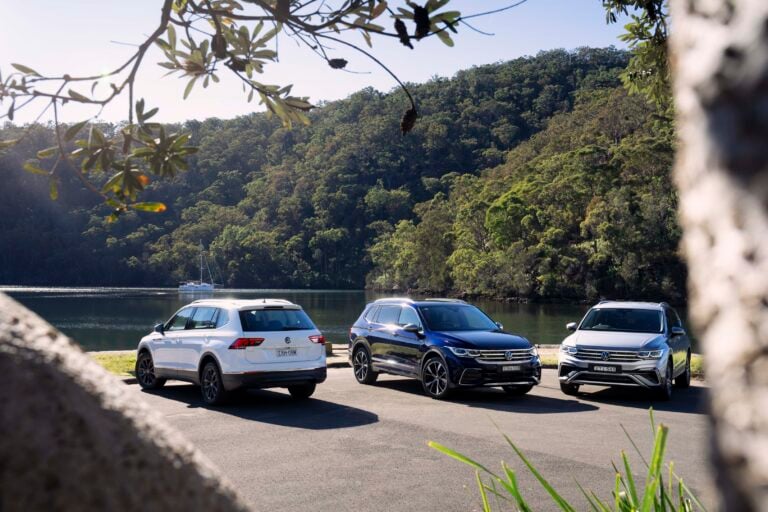 Reviews
Reviews2022 Volkswagen Tiguan Allspace review
Bigger Mexican-built Tiguan arrives with more stuff, a new variant and hefty price rises
-
 News
NewsNew car calendar 2026: All the new cars coming to Australia next year
Here’s the WhichCar by Wheels guide to all the new cars that will launch in Australia in 2026. Check back in regularly for updates...


